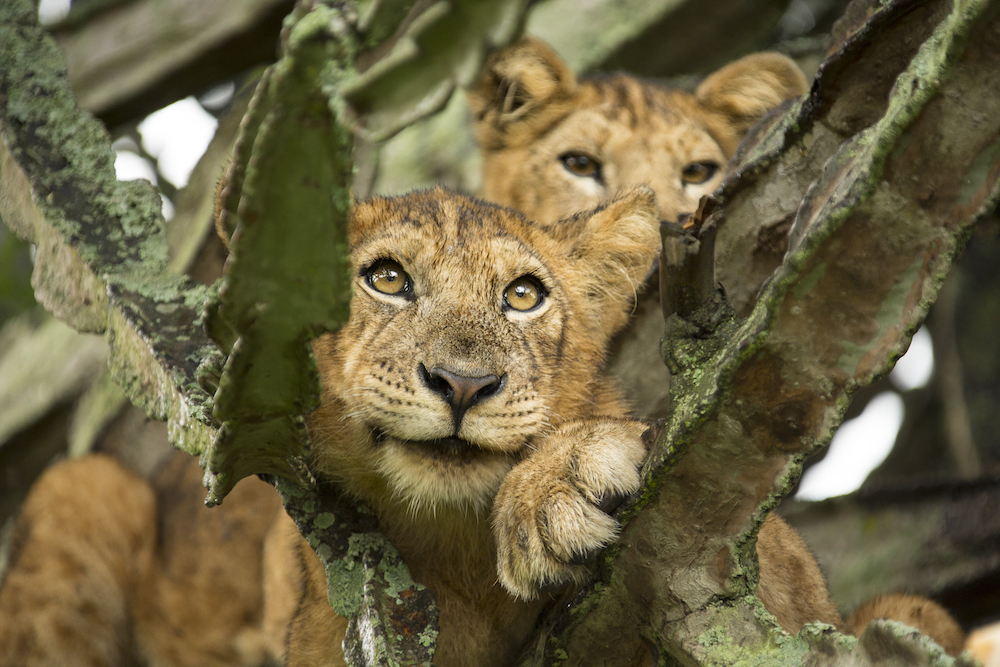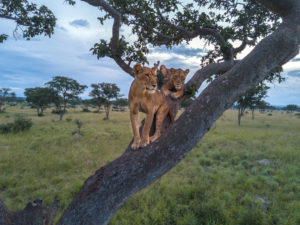
Two Griffith-led collaborations published this week indicate that Lion populations in Africa may be lower than current estimates suggest.
The research, in Frontiers in Ecology & Evolution,and Ecological Solutions and Evidence, found that current lion counting methods for research/conservation purposes are overestimating lion numbers and densities.

Lead author Alexander Braczkowski, of the Environmental Futures Research Institute, discovered that only monitoring methods which directly identify individual lions provide an accurate account of lion numbers and density, the number of males to females and how far they travel.
"African lions are one of the world's most loved animal species and for that reason they garner both conservation attention and funding," Mr Braczkowski said.
"Yet some experts believe their populations have experienced a 50% decline since 1994 when, coincidentally, Disney's The Lion King was released.
"Current calculations indicate between 20,000 and 30,000 remain in the wild, scattered across 102 populations in Africa, however, our research suggests these numbers may be substantially lower.
"Most African lion abundance and density estimates are based upon track counts, audio lure surveys and expert solicitation - which are simply not informative enough to understand how lion populations are doing over time."
According to Mr Braczkowski, as outlined in Frontiers in Ecology & Evolution, the methods being used to calculate lion abundance and density is lagging behind those adopted for other big cats, such as tigers, leopards and jaguars.
"Only by using long-term surveys using photographic methods to identify individual lions can you accurately track population size, density and sex-specific movements.
"Monitoring these parameters over time provides important insights into population health, that current methods like audio surveys or track counts, can't. For example, large home ranges and skewed sex-ratios, can signal prey depletion and imminent population collapse.
"This technique, developed in the Maasai Mara by co-authors Dr Nic Elliot and Dr Arjun Gopalaswamy, compiles data on lion identities and their movement into a model of lion density across the landscape. This is analysed with the aid of powerful computers."
In their second research paper, Mr Braczkowski and colleagues assessed the ability of this technique to better understand the status of lions in Queen Elizabeth National Park, Uganda.

"This was the perfect place to use this approach since lions in Queen Elizabeth National Park spend a lot of their time up in trees, and it is relatively straightforward to get good pictures of them," Mr Braczkowski said.
"This lion population also carries great local tourism value, with each lion estimated to raise about USD$14,000 annually.
"Queen Elizabeth National Park is an unusual site where lions, owing to their unique tree-climbing behaviour are frequently seen by managers and tourists," Dr Gopalaswamy, Science Advisor, Global Programs, Wildlife Conservation Society said.
"This situation can sometimes give the wrong feeling that the status of lions here is healthy. However, a feature of the spatial models we used in this study is they also provide information on movement, which is a very informative for researchers and conservationists."
Mr Braczkowski and colleagues found lions in Queen Elizabeth National Park were now moving more and have larger home range sizes compared to the previous study conducted about a decade ago.
"Since larger home range sizes in carnivores is often associated with lower animal densities due to less available prey, this is a concerning trend," Mr Braczkowski said.
Dr Duan Biggs, a co-author on the studies from Griffith University added that, "in light of the conservation threat due to the collapse in tourism in Africa it is now more urgent than ever to have accurate, reliable monitoring of lion numbers on the continent.
"Our studies demonstrate the value of using methods that keep track of lion populations directly. We urge the conservation and research communities working on the ground to shift their monitoring practices to these newer, more reliable and direct methods."
"It appears this is starting to happen, with the method being adopted by the Kenya Wildlife Service and partners to survey lions and other carnivores across Kenya."






